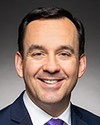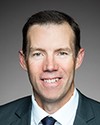For the question around ATRs, I believe it was stated a while ago by the Auditor General that on average it takes about nine years, or something like that, to transfer land over from non-reserve to reserve. As you can imagine, anything that creates a level of uncertainty around business is going to cause business to raise a red flag. Any delay that prohibits a first nation trying to report on some level of development will certainly have an impact on its ability to raise capital. I think that's a given. If this was a little more streamlined and more predictable, I think it would enhance the level of access to capital.
Around third-party management there are two things to consider certainly from the banking perspective. When there is that trigger around third-party management, it's an indication that the financial situation of the first nation may not be as strong as what it could be. As I mentioned in my testimony, when you look at and determine whether you're going to provide financing to a first nation, you have to consider the strength of the borrower. That's one consideration amongst three. Can they service the debt? What kind of security can you get? It's not to say a bank would never finance a first nation in third-party management. You'd have to look at all the circumstances, but without a doubt that would be seen as particularly a red flag.
What's fascinating around this—and not necessarily getting into, as Terry said, the need for metrics and so on, which I agree with—is having a look at where some of these first nations are in terms of third-party management. In some cases you look at some of the far northern communities in Northern Ontario—you know, significantly in third-party management, or some level of federal intervention—and the question to me would be, why? Clearly there isn't a pattern that people have this level of mismanagement. I mean, maybe it's funding level. I personally don't know. I haven't done the analysis around it, but when you map out exactly where they're located, in some situations it seems to be geographically based. They're isolated, fly-in-only communities where providing programs and services to their community members are very expensive. The question is what kind of federal funding levels are they receiving right now? I think that's one indication as well, if there is that certain pattern. It's not to say that every single community has no capacity, but if you're talking about far remote northern communities, is this really an issue of funding? Do they not have the ability to meet the growing demand of their communities is one question I would ask.
Thank you.




